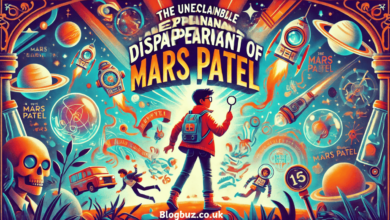DJ Lights vs Disco Lights: Which Is Better for Your Event?

DJ lights (like moving heads, lasers) sync with music beats and work best for clubs, concerts, or events where lights need to match fast-paced music. Disco lights focus on colorful, steady vibes for parties like weddings or birthdays.
Which is better? DJ lights are best for lively, high-energy events, while disco lights suit chill, themed parties. Choose DJ lights if your venue is large or you want precise control (DMX systems). Pick disco lights for smaller spaces, lower budgets, or automatic sound-activated setups. Need bright, flashy effects? Go, DJ. Want retro colors and simplicity? Go disco.
Let’s break down what fits your event.
Key Differences Between DJ Lights and Disco Lights
So, you’re trying to figure out what sets DJ lights and disco lights apart? Let’s keep it simple. Both light up your party, but they’re like apples and oranges—different tools for different vibes.
Functional Purposes: Atmosphere vs. Visibility
Disco lights are all about the atmosphere. Think mirror balls spinning rainbow dots or LED walls bathing the room in soft purple. They’re here to make your party feel like a retro dance floor or a cozy glow-filled space. DJ lights, though? They’re about visibility and energy. Lasers slice through the dark, strobes flash with the bass, and moving heads chase the beat. If your event needs lights that sync perfectly with fast music (like a concert), DJ lights are the star.
Cost Considerations: DJ Lights vs Disco Lights
Let’s talk money. Disco lights (like basic LED pars) usually cost less upfront—great for tight budgets. Want something temporary? Rent a disco setup for a weekend. DJ lights (like moving heads) are pricier but pack more punch for big venues. Oh, and energy bills? Disco lights with LEDs save power, while DJ lights with lasers guzzle more. If you’re after low maintenance, go disco. Need pro-level control? DJ lights with DMX systems let you program every flash—but that skill takes practice.
Types of Lighting Systems
Let’s break down the two central lighting systems you’ll see at parties or gigs.
Moving Heads and Lasers (Common in DJ Setups)
Moving heads are the rockstars of DJ gear. These lights twist, turn, and shoot lasers that slice through the dark like glowing swords. They’re packed with features like DMX control—letting you program every flash to match the music’s drop. Some even sync to sound automatically, flashing faster when the bass kicks in. Do you want to project a logo or star pattern? Slip a gobo (a tiny stencil) into the light, and boom—your brand’s on the wall. DJs love these for concerts or clubs because they’re loud, fast, and keep crowds hyped.
LED Pars and Strobe Lights (Disco Staples)
Disco vibes? Think LED pars—those boxy lights that splash colors everywhere. They’re simpler than moving heads but just as fun. With RGB mixing, you can create soft purples, bright blues, or even rainbow fades. Pair them with strobe lights, and you’ve got that classic flash-flash effect that turns living rooms into dance floors. Unlike DJ setups, disco lights often work in sound-activated mode—no programming is needed. Just plug ’em in, and they’ll pulse to the beat. Perfect for weddings or birthdays where you want colorful chaos without the hassle.
So, DJ lights (moving heads) are for control, while disco lights (LED pars) are for vibes. Your choice? Depends on whether you’re spinning tracks or spinning the dance floor!
5 Factors to Choose the Right Lights
So you’ve seen the types of lights—now, how do you pick your perfect setup? It’s not just about flashy gadgets.
1. Venue Size and Ceiling Height
Do you have a cozy backyard? LED pars or small strobe lights might be enough. But if you’re lighting a massive hall or outdoor space, you’ll need moving heads or lasers that throw beams farther. Ceiling height matters too: low ceilings limit where you can hang lights, while high ones let you mount truss systems for pro-level coverage.
2. Event Type (Weddings vs. Nightclubs)
Weddings need soft, romantic vibes—think warm uplighting or twinkling fairy lights. Nightclubs? Go loud: lasers that slash through fog, strobes that blind in time with the bass. For a birthday, maybe a mirror ball and RGB washes for that retro glow. Match the lights to the mood, not just the music.
3. DMX Control vs. Sound-Activated Modes
DMX control lets you program lights like a puppet show—every flash, color, and movement timed perfectly. But it takes skill. If you’re new, sound-activated modes are easier: plug in disco lights, and they’ll pulse to the beat automatically. DJs love DMX; disco fans? Stick to simplicity.
4. Budget: Entry-Level vs. Professional Gear
Entry-level lights (like basic LED panels) cost less upfront and work for small gigs. Professional gear (motorized moving heads) burns a hole in your wallet but lasts longer and wows bigger crowds. Renting is bright for one-off events—no need to own a laser if you’ll only use it once.
5. Safety and Setup Complexity
Disco lights are plug-and-play: hang ’em, turn ’em on. DJ setups? You might need to climb ladders, wire DMX cables, or secure heavy trusses. Always check fire hazards (hot halogen bulbs vs. cool LEDs) and tripping risks. If you’re unsure, hire a pro—better safe than sorry!
How to Choose DJ Lights for Small Weddings
Planning a cozy wedding? You need lighting that’s simple, affordable, and romantic—no bulky gear or flashy strobes are required. DJ lights offer versatility and control that can transform an intimate venue into a personalized celebration space. Unlike standard disco lights, professional DJ lighting solutions from Betopper are specifically designed to complement various wedding moments—from the romantic first dance to the energetic reception party.
Minimalist Lighting for Intimate Spaces
For small venues, one or two LED pars work wonders. These lights beam soft colors (like blush or gold) onto walls or dance floors without overwhelming guests. Use sound-activated mode so they pulse gently to slow songs and brighten during upbeat tracks—no manual tweaking! Want elegance? Try wireless uplighting around the room’s edges. It highlights arches or centerpieces in your wedding colors and stays hidden behind decor. Skip cables with battery-powered options (just charge ’em beforehand!).
Budget-Friendly Disco Alternatives
Can’t afford DJ lasers? Grab a small disco ball (under $50!) and pair it with an essential spotlight. The spinning reflections create a retro vibe without the cost. String lights draped over ceilings or bushes add a fairy-tale glow, while LED strips under tables or along aisles give a modern twist. For dance floors, a moonflower projector throws swirling patterns that feel fancy but cost less than dinner for two.
Pro tip: Mix warm white lights for dinner with colorful disco effects later. Your guests get romance and party vibes—all without breaking the bank!
Stage Lighting vs. Disco Lighting: Pros and Cons
Let’s settle the stage vs. disco lighting debate. Both light-up events, but they’re built for very different goals.
Stage lights (like spotlights) pack a punch—they’re bright enough to light singers or actors in big venues. Their beams cut through dark rooms but often stick to white or warm tones. Disco lights? They’re the kings of color range. With RGB mixing, they paint walls in neon greens, deep purples, or rainbow fades. Want a laser show? Disco wins. Need to spotlight a speaker? Stage lights rule.
Stage lights are built like tanks. They handle heat (old halogen bulbs get fiery!) and vibrations from loudspeakers. Disco lights? They’re lighter and use cool LEDs, but cheaper models might fry in humid outdoor gigs. For raves or clubs, go with IP-rated disco lights that resist dust and sweat.
Lighting Control Systems
Ever heard of DMX control? It’s like a remote for lights—but way more intelligent.
Wired DMX uses cables to connect lights. It’s reliable but messy (trip hazard alert!). Wireless systems let you control lights from your phone—perfect for outdoor parties where cables can’t reach. Just watch for signal drops near metal stages or Wi-Fi crowds.
Preprogrammed shows are like playlists: set your lights to auto-pilot for a wedding’s first dance. Live adjustments let you tweak colors mid-song—great for DJs who improvise. New to this? Start with preprogrammed; upgrade to live control later.
Best Disco Lights for Outdoor Parties
Outdoor parties need rugged gear. Here’s what works under the stars.
Weatherproofing and Power Requirements: Look for IP65-rated lights (they survive rain or dust). Battery-powered LED pars or solar string lights save you from hunting for outlets. Avoid lasers—they’re fragile and need dry conditions.
Ambient vs. Dynamic Effects
Ambient lights (like string lights or lanterns) create a chill vibe for garden parties. Dynamic effects (strobe lights, moving projectors) turn backyards into dance floors. Mix both: soft lighting for dinner, and wild flashes for dessert!
Budget Breakdown: DJ vs. Disco Lighting
Renting disco lights costs less upfront—around $50/day for basics. DJ lighting? Double that for moving heads. Buying makes sense if you host monthly gigs.
DJ setups need DMX controllers ($100+) and maybe an electrician to wire trusses. Disco lights are just plug-and-play, but burnt LEDs need to be replaced yearly.
Conclusion
DJ lights vs. disco lights—it’s not about “better,” but what fits your event. Pick DJ gear for high-energy control and disco for effortless vibes. Match your budget, venue size, and skills. Still stuck?
Chat with a lighting pro—they’ll turn your party vision into a light show reality!




